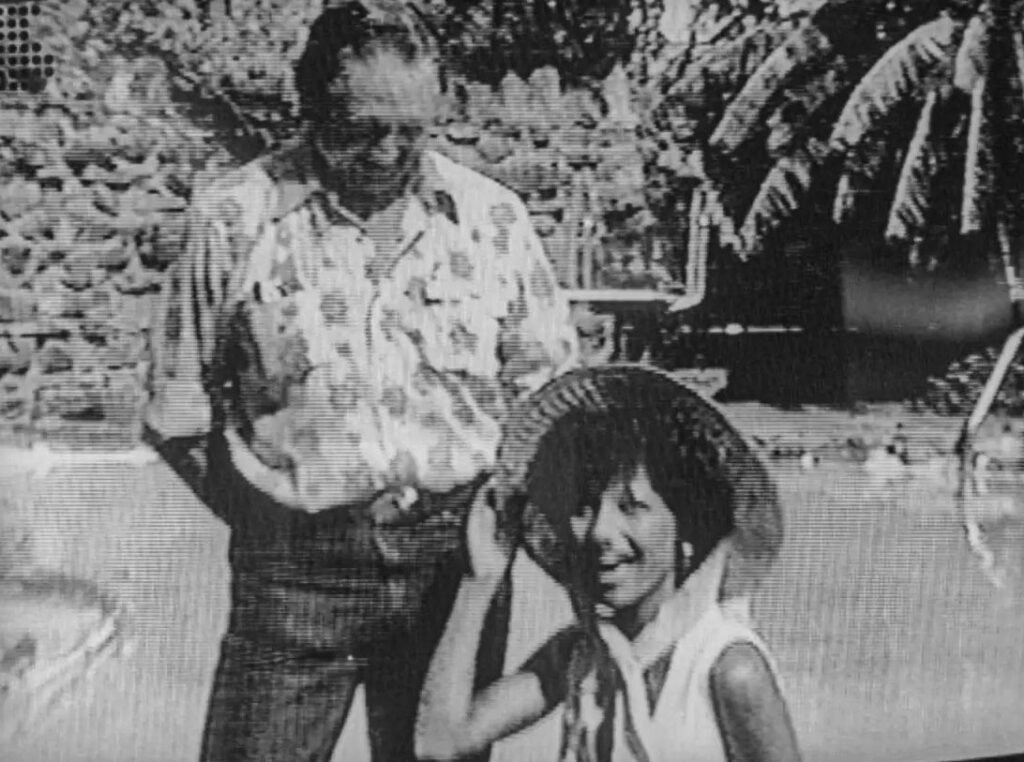In the festive echo of Thanksgiving, a holiday synonymous with gratitude and family gatherings, lies a story so chilling it seems ripped from the pages of a horror novel. This isn’t your typical story of happy meals and heartfelt gratitude, but a horrifying story that shocked many.
The year 1991 marked a chilling chapter in California’s history, forever altering the perception of this family holiday. Enter the harrowing world of Omaima Nelson, or let’s call her… “The Costa Mesa Cannibal“.
This isn’t just a crime story; it’s a descent into the darkest corners of human nature.
A Thanksgiving Nightmare
In the serene neighbourhood of Costa Mesa, a ghastly event occurred over three decades ago. Omaima Aree Nelson, once a resident of this tranquil area, committed an atrocity that has been indelibly recorded in the annals of crime. Convicted for the murder of her husband, William E. Nelson, during Thanksgiving in 1991, her crime extended to the dark corners of the most heinous acts.
The Costa Mesa Cannibal
Omaima Nelson, an Egyptian fashion model who immigrated to the United States in 1986, was in her 20s when she committed this heinous act against her 56-year-old husband. Their brief marriage, which spanned merely a month, tragically culminated in a scenario akin to a nightmare. Initially, Omaima’s actions escalated beyond mere homicide; she gruesomely dismembered her husband’s body within the confines of their shared apartment.

Furthermore, the details of this horrifying act were particularly gruesome. Αccording to LA Times, she admitted cooking her husband’s head, boiling his hands to remove the fingerprints and mixing up body parts with leftover Thanksgiving Day turkey to hide the remains in a trash bin.
During her trial, Nelson testified that she also castrated him out in revenge for his sexual assaults. The horrors don’t end there. Dr. David J. Sheffner, Omaima Nelson’s psychiatrist, claimed that she told him that when she killed her husband, she dressed up in a red hat, red high-heel shoes and red lipstick as part of a ritual during the nightlong dismemberment and that she ate William Nelson’s ribs after cooking them in barbecue sauce. A claim that she later denied and can never be proven, even though they never found all of his remains.
The Aftermath
The crime was uncovered when Omaima reached out to a former boyfriend, offering $75,000 for help in disposing of the body parts. Her arrest on December 2, 1991, followed the police’s discovery of human remains in their apartment and in William Nelson’s Corvette. Neighbors reported hearing continuous chopping noises and the garbage disposal running unusually long.

Read also: The most disturbing crimes committed by people dressed as clowns
The Trial
As mentioned above, during the trial, the psychiatrist testified about the gruesome specifics of Omaima’s actions. She defended herself with claims of being a victim of marital rape and abuse. Her lawyer resorted to a victim defense of repeated abuse by her husband and the abuse she suffered as a child by her father. According to her story, her alcoholic father even made her undergo a circumcision (mutilation of the female genitalia), which it resulted in acute pain while having sex. However, the brutality of her crime overshadowed these claims.
The Enduring Impact
Prosecuted by Senior Deputy District Attorney Randy Pawloski, this case is remembered as one of the most horrific and infamous in the history of Orange County. Former Costa Mesa Police Sgt. Bob Phillips, who investigated the case, described Omaima as the most disturbing and deranged individual he had ever encountered. This case serves as a haunting reminder of the extreme depths of human hatred and the appalling actions individuals are capable of committing.
Nelson’s chilling Crime during Thanksgiving have drawn comparisons to the infamous Hannibal Lecter, the fictional cannibal serial killer from “Silence of the Lambs”, and Jeffrey Dahmer. Her horrifying case caught significant attention and was featured in Investigation Discovery’s shows “Happily Never After” and “Deadly Women.”

Source: Oxygen.com
As the echoes of this Brutal Crime on Thanksgiving fade, we’re left pondering the unfathomable depths of the human mind. Omaima Nelson’s story is not just a recount of a brutal crime. It’s a grim reminder of the hidden horrors that can erupt amidst our most cherished traditions.
In the 90s, solving crimes was a different ball game. Fast forward to today, and social media has revolutionized the true crime scene. It’s fascinating how it’s become a game-changer in unmasking serial killers. Let’s dive into how social media cracked the case wide open in five chilling serial killer investigations.

